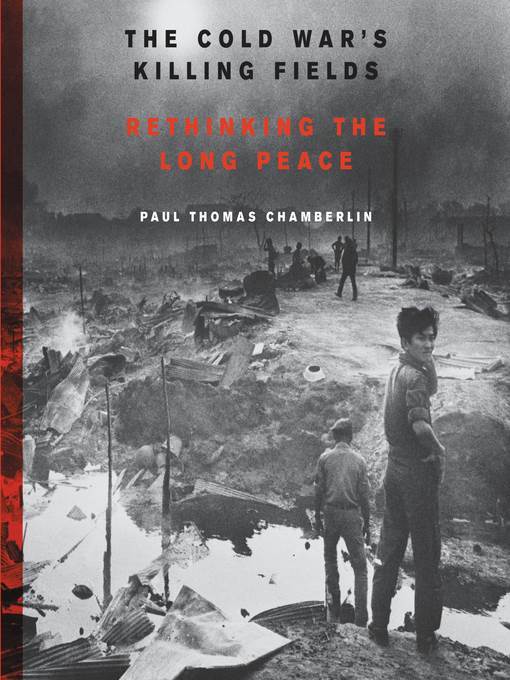
The Cold War's Killing Fields
Rethinking the Long Peace
کتاب های مرتبط
- اطلاعات
- نقد و بررسی
- دیدگاه کاربران
نقد و بررسی

Grover Gardner capably narrates Chamberlin's account of how the Cold War was much hotter than we in the West appreciate. Although there was a tense and uneasy peace in Europe during this period, Chamberlin documents the hot and bloody events that occurred on a line running from the Middle East through Central Asia to Southeast Asia. For the period of the Cold War, more than 90 percent of the deaths of those from the United States and the Soviet Union occurred in this area. Gardner's voice, although a bit gravelly, is quite good narrating this work. His pacing is easygoing but not too slow, and his voice always appropriately expressive. Overall, his performance quickly draws the listener into this fascinating work. M.T.F. � AudioFile 2018, Portland, Maine

August 1, 2018
Chamberlin (history, Columbia Univ.; The Global Offensive) convincingly shows that the Cold War (1945-90) was neither cold nor solely a confrontation between the United States and the Soviet Union. Twenty million people were killed in bloodbaths that placed political ideology and religious fundamentalism above citizens' welfare, as emerging third-world nations sought independence from former colonial empires. The author asserts that in terms of carnage and destruction, the Cold War must be considered along with both World Wars. Chamberlin identifies three waves of Cold War mass conflicts: East Asia (1945-59), Global Communism (1961-79), and Religious Wars (1975-90), and provides vivid descriptions of specific battles from each period in China, Korea, Southeast Asia, East Asia, and the greater Middle East. This deeply researched account draws on recently declassified CIA records that will shock those who view the conflict as an exercise in superpower diplomacy. VERDICT Chamberlin has done for the Cold War era what Fredrik Logevall's Choosing War did for the Vietnam War. Historians and other informed readers will find much to consider in this significant revisionist work.--Karl Helicher, formerly with Upper Merion Twp. Lib., King of Prussia, PA
Copyright 2018 Library Journal, LLC Used with permission.

Starred review from June 15, 2018
A revisionist history of the Cold War era. The traditional historical narrative of the Cold War is that it was a bipolar conflict between the United States and the Soviet Union during which proxy conflicts occasionally flared, and in which tensions were at times almost unimaginably fraught, but where the two antagonists avoided a hot war. However, as Chamberlin (History/Columbia Univ.; The Global Offensive: The United States, the Palestine Liberation Organization, and the Making of the Post-Cold War Order, 2012) shows in this ambitious, important book, while the two nuclear powers never engaged in a shooting war, the era from 1945 to 1990 was hardly the "Long Peace" of legend. The author explores a vast swath of geographical territory and shows how, at the time, these "bloodlands" were engulfed in myriad devastating conflicts, sometimes as Cold War proxies but often as combatants in internecine struggles tied into Cold War politics but not always bound to the major powers. The result was some 14 million deaths, the majority of which were civilians; for them, the war was anything but cold. Chamberlin, who writes gracefully and argues convincingly, sees many of these conflicts predominantly through the American geopolitical lens, but he still takes a broad view of these regional and global politics, which uncoil in phases that follow the geography from east to west. The author's research is impressive, though due to the vast geographic parameters, much of the work is necessarily synthetic. Because of this book's scope, size, and ambition (more than 600 pages including notes and index), it is perhaps churlish to criticize what the author does not address, but hopefully future historians will take Chamberlin's significant arguments and extend them to Africa and Latin America, where they are equally applicable. The international Cold War rivalry between the U.S. and the Soviet Union did not lead to World War III, but as Chamberlin ably shows in this tour de force, that does not mean the era's rivalries did not result in widespread carnage.
COPYRIGHT(2018) Kirkus Reviews, ALL RIGHTS RESERVED.

























دیدگاه کاربران